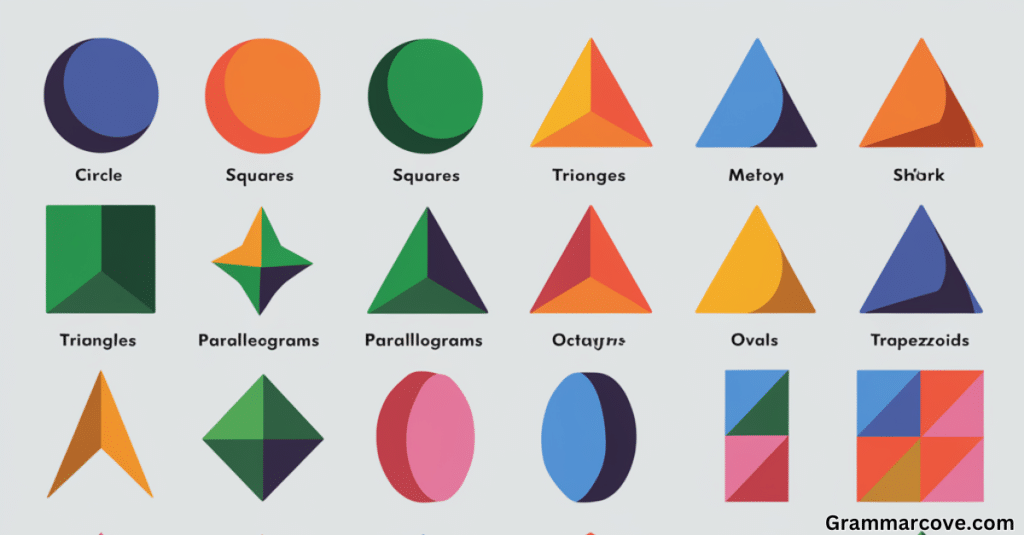Shapes are everywhere—in our homes, schools, workplaces, and even in nature. Learning to recognize and identify them is a fundamental skill that spans various fields, from mathematics to architecture. This list of all types of shapes will guide you through the most common and unique forms, helping you understand their properties and where you might encounter them in daily life.
This guide will introduce you to different types of shapes with explanations and real-world examples for each. We’ll cover both two-dimensional (2D) shapes and three-dimensional (3D) shapes to give you a comprehensive Shapes Names Vocabulary.
Types of Shapes
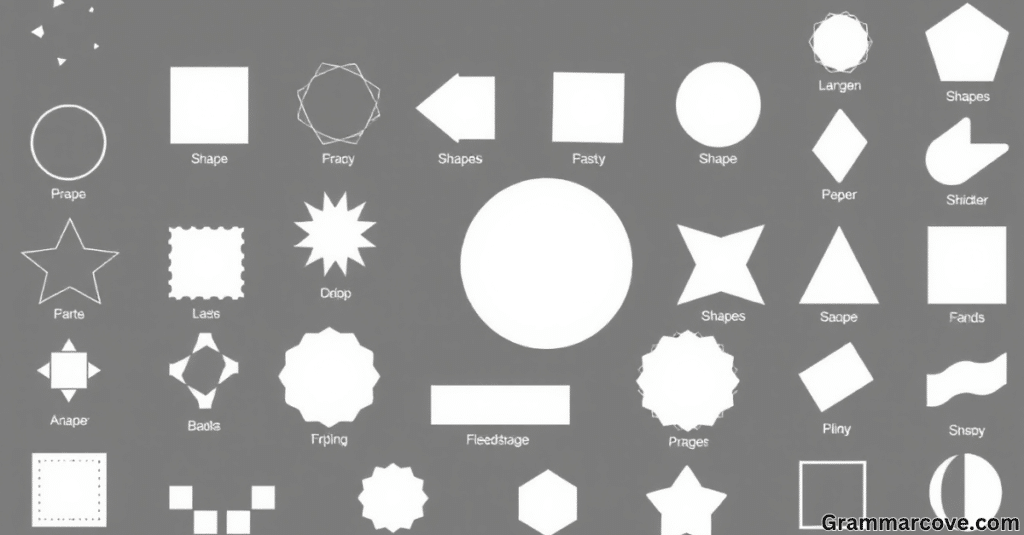
Shapes can generally be divided into two main categories: Two-Dimensional Shapes and Three-Dimensional Shapes.
Each has its own characteristics, uses, and examples. Let’s dive into each category and explore various Geometrical Shapes with images, examples, and descriptions.
Two-Dimensional Shapes
Two-dimensional, or 2D shapes, have only length and width. They’re flat and can be drawn on paper or any flat surface.
Circle
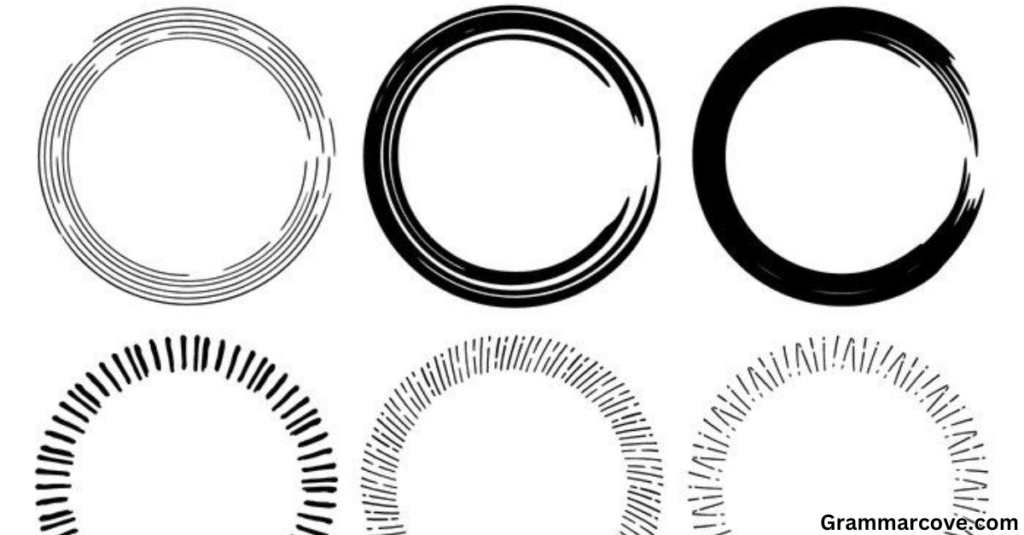
A circle is a round shape with no corners or edges. Every point on a circle’s edge is the same distance from the center. Think of it as a never-ending curve, like a wheel or a coin.
- Example in Daily Life: If you’re writing an email to your friend Kate about designing her new café, you might say, “The café tables should be round like a circle so customers can sit and chat comfortably.“
Shapes in Daily Life include circles like dinner plates, buttons, and even the sun.
Square
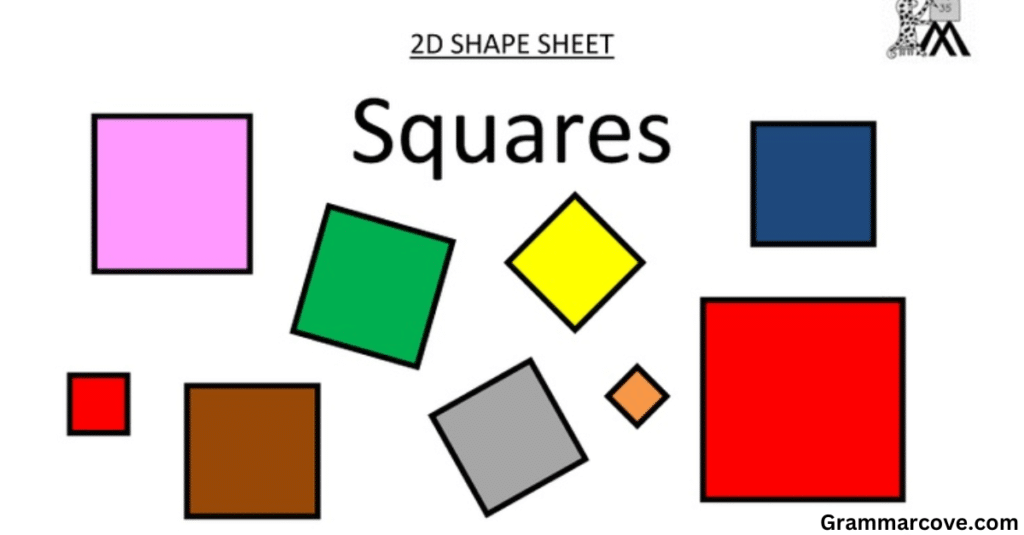
A square has four equal sides and four right angles. It’s one of the most common Mathematical Shapes used in everyday objects and designs.
- Example Scenario: Imagine sending a message to Tom about garden layout ideas. You could write, “Why don’t we use square-shaped flower beds? They’re easy to organize and look neat.“
Shapes Vocabulary with Images for squares often includes things like tiles, boxes, and windows.
Rectangle

A rectangle has opposite sides that are equal and four right angles, making it similar to a square but with two longer sides. This shape is highly practical in design and structure.
- Real-World Example: For a client named Sara who’s moving into a new office, you could suggest, “Let’s use rectangular desks since they fit well along the walls.“
Rectangles appear in books, mobile screens, and picture frames—so they’re essential for Shape Identification.
Triangle
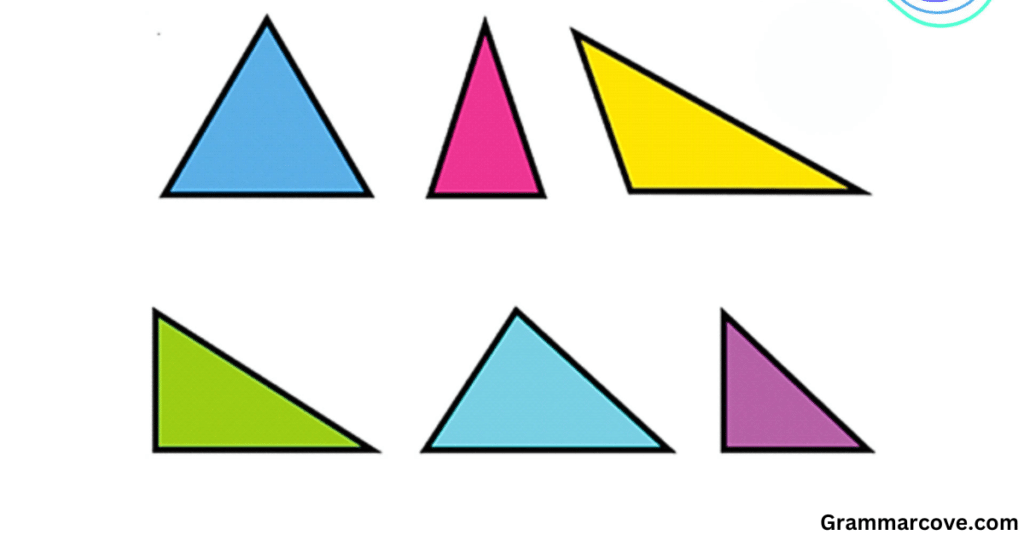
A triangle has three sides and three angles. Triangles can vary widely: they might be equilateral (all sides equal), isosceles (two sides equal), or scalene (no sides equal).
- Scenario Example: In a message to an art student named Lucas, you might write, “For your project, try using triangle shapes to make your artwork appear more dynamic.“
Triangles are present in Shapes in Daily Life, such as in road signs, sails, and even pyramids.
Pentagon
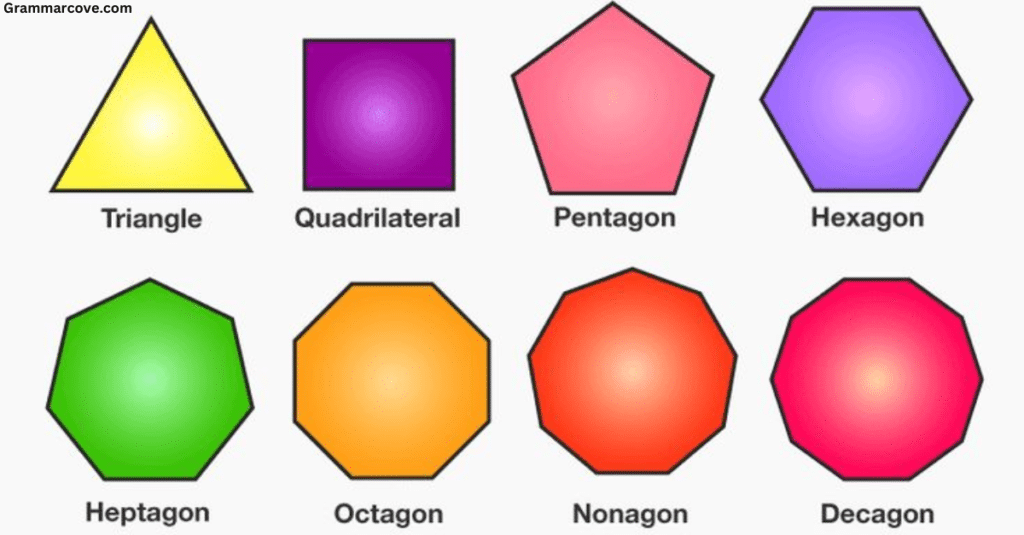
A pentagon has five sides. This unique shape can be seen in some natural forms and symbolic designs.
- Email Example: Telling a design team, “Incorporating pentagon patterns can add a unique flair to the project.“
Pentagons are less common in daily life, but they’re often used in military symbols and architecture.
Hexagon
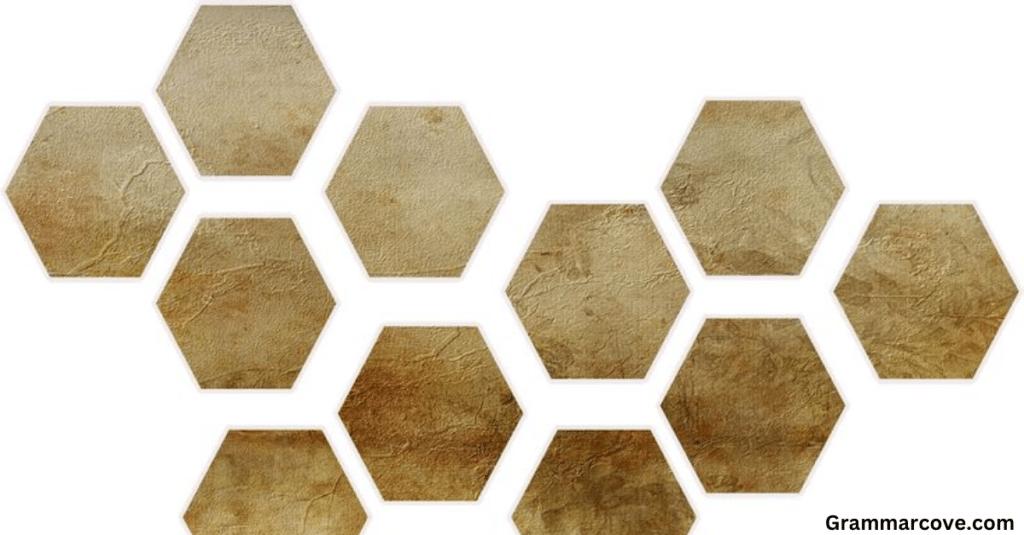
A hexagon is a six-sided shape often found in geometrical patterns. Honeycombs are one of the best-known examples.
- Example Email: Writing to a gardening enthusiast, “Consider arranging hexagonal flower beds; they interlock neatly and look beautiful.“
Hexagons are practical for tiling because they cover space efficiently without gaps.
Three-Dimensional Shapes
Moving into three-dimensional space, we find shapes that have depth as well as length and width. 3D Shapes are essential in fields like engineering and art, where a full understanding of volume and form is required.
Sphere
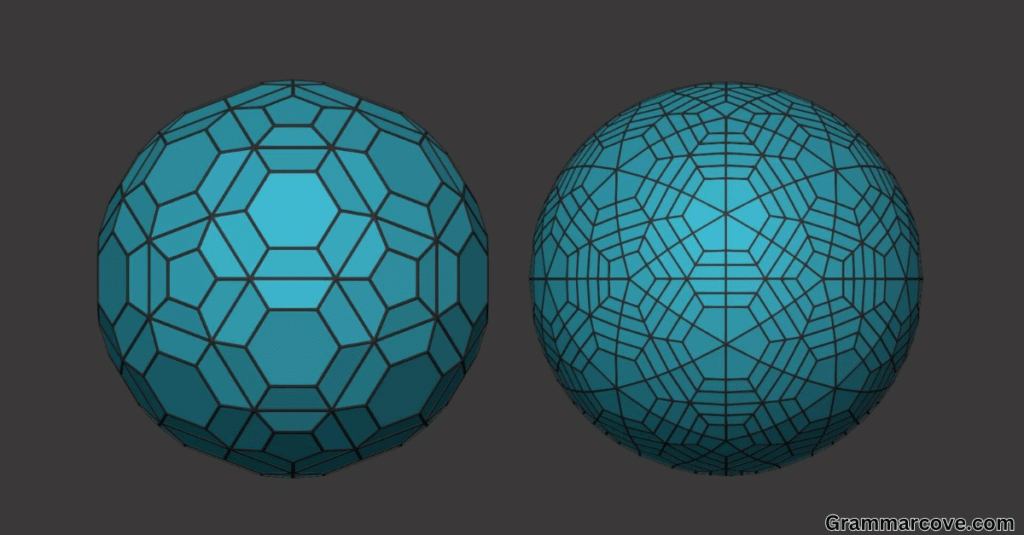
A sphere is a perfectly round shape, like a ball. All points on the surface of a sphere are an equal distance from its center.
- Example Scenario: Imagine advising a teacher named Mr. Allen: “Using spheres in the classroom, like globe models, helps students understand geography better.“
Spheres in daily life include globes, basketballs, and even planets.
Cylinder
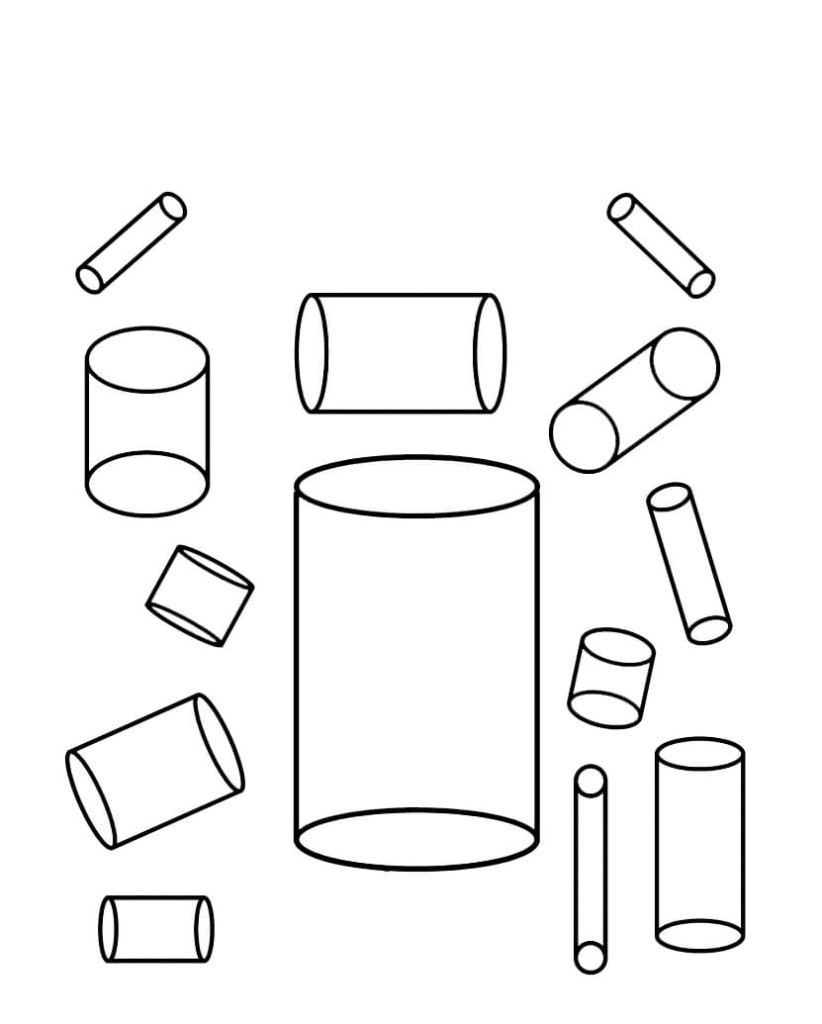
A cylinder has two circular faces at each end and a curved surface connecting them. It’s common in containers and machinery.
- Example in Daily Life: Recommending to a baker, “Cylindrical molds are perfect for layered cakes since they provide even, rounded edges.“
Shape Descriptions with Examples for cylinders include objects like cans, pipes, and candles.
Cube
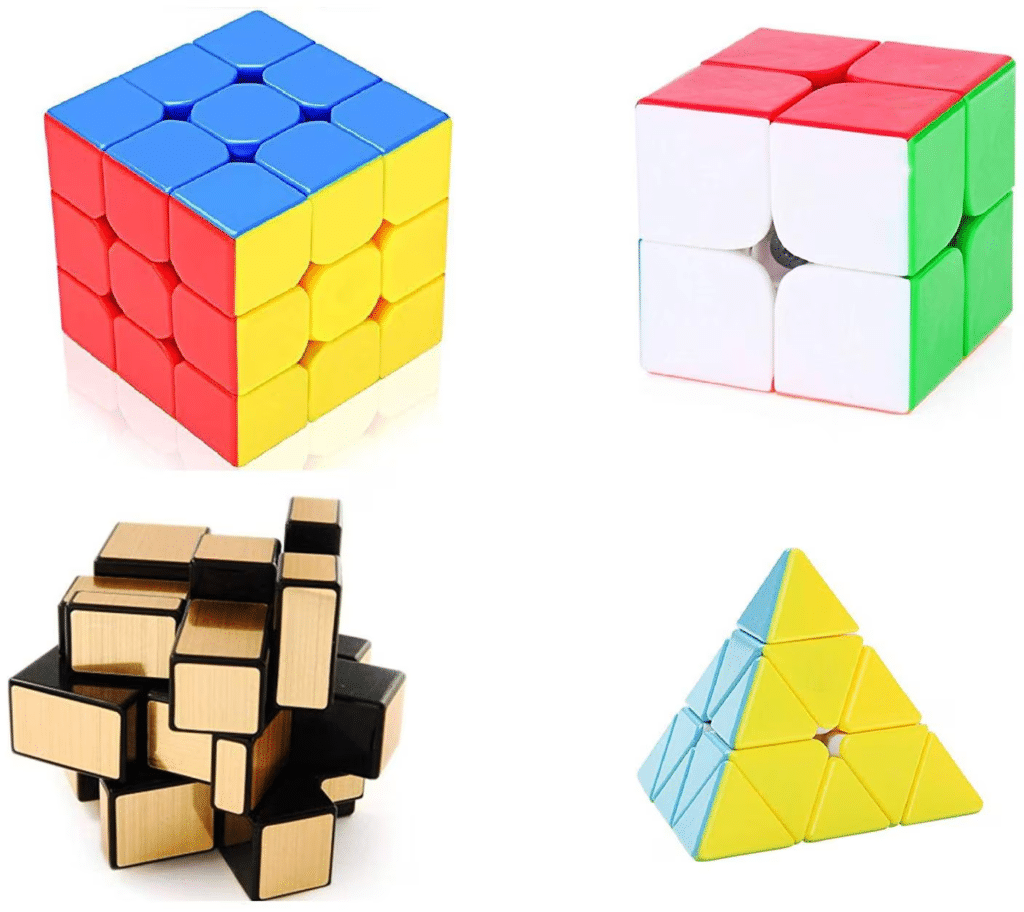
A cube has six square faces, all of equal size. It’s one of the fundamental shapes in 3D Geometry and is easily recognizable.
- Scenario Example: Talking to a storage planner, “Cubic storage boxes stack well, making organization a breeze.“
Cubes are found in dice, ice cubes, and many packaging containers.
Pyramid

A pyramid has a polygon base and triangular faces that meet at a point (the apex). Most commonly, we think of pyramids with square bases, like the Great Pyramids of Egypt.
- Example Email: To an architecture student, “Try incorporating pyramidal shapes in your model to add an element of stability.“
Pyramids are rare in daily life but often appear in historical monuments and art.
Cone

A cone has a circular base and a single curved side that tapers to a point. It’s common in design, food, and traffic management.
- Scenario: Suggesting to an event planner, “Cones make great treat holders at events because they’re easy to carry and look appealing.“
Shapes in Daily Life include cones like ice cream cones, funnels, and party hats.
Shape Identification and Vocabulary
Learning these Shape Names Vocabulary terms not only helps in academic or professional contexts but also enhances daily interactions. Recognizing shapes like 3D Shapes: Sphere, Cylinder, Cube, Pyramid, Cone in common objects adds depth to your visual understanding and helps in Shape Identification across various settings.
Shapes Vocabulary with Images
To reinforce your understanding, here’s a Shapes Vocabulary with Images:
| Shape | Image Description | Examples |
|---|---|---|
| Circle | Perfect round shape | Coins, wheels, plates |
| Square | Four equal sides, four right angles | Tiles, frames, chessboards |
| Rectangle | Opposite sides equal, four right angles | Books, screens, doors |
| Triangle | Three sides, varying angles | Road signs, pyramids, sails |
| Pentagon | Five equal or unequal sides | Military insignia, some star symbols |
| Hexagon | Six equal sides, common in tiling | Honeycomb, nuts/bolts, floor tiles |
| Sphere | Round 3D shape | Basketball, planets, marbles |
| Cylinder | Two flat circular faces, one curved face | Cans, pipes, candles |
| Cube | Six equal square faces | Dice, storage boxes, ice cubes |
| Pyramid | Polygon base with triangular sides | Egyptian pyramids, certain gems |
| Cone | Circular base tapering to a point | Traffic cones, party hats, funnels |
Shapes in Daily Life: Practical Applications
Shapes influence countless practical aspects of life. For example, geometric shapes in architecture, like squares and rectangles, create stability and predictability in building designs. In interior design, round shapes like circles are used to create softer, more inviting spaces, while sharp-edged triangles or pentagons add modern appeal. Understanding this list of all types of shapes helps you appreciate how these forms impact both design and functionality.
In cooking, 3D shapes like cylinders and spheres help create consistent food shapes, and knowing these shapes can make instructions clearer. Shapes can also serve symbolic roles: a circle often represents unity, while a triangle can represent strength.
Shape Descriptions with Examples in Communication
Understanding shapes also enhances our ability to communicate across various contexts. For example, if you’re an educator creating an instructional video, using a list of all types of shapes with clear descriptions and examples can make your explanations more engaging and relatable for students.
Or, suppose you’re an artist discussing your choice of shapes in a piece. Referring to mathematical shapes like cubes and spheres can help convey the structure and flow in your work. By using a list of all types of shapes to highlight these geometrical shapes in an accessible way, you allow others to appreciate the intricate details of your design.
Conclusion
Learning the types of shapes and their characteristics opens doors to various fields—from art and design to engineering and teaching. Familiarizing yourself with this list of all types of shapes and their names, along with images, allows you to observe and communicate the world more precisely. So next time you see a traffic sign, a garden path, or even a dish on the dinner table, take a moment to consider the shapes within them.


